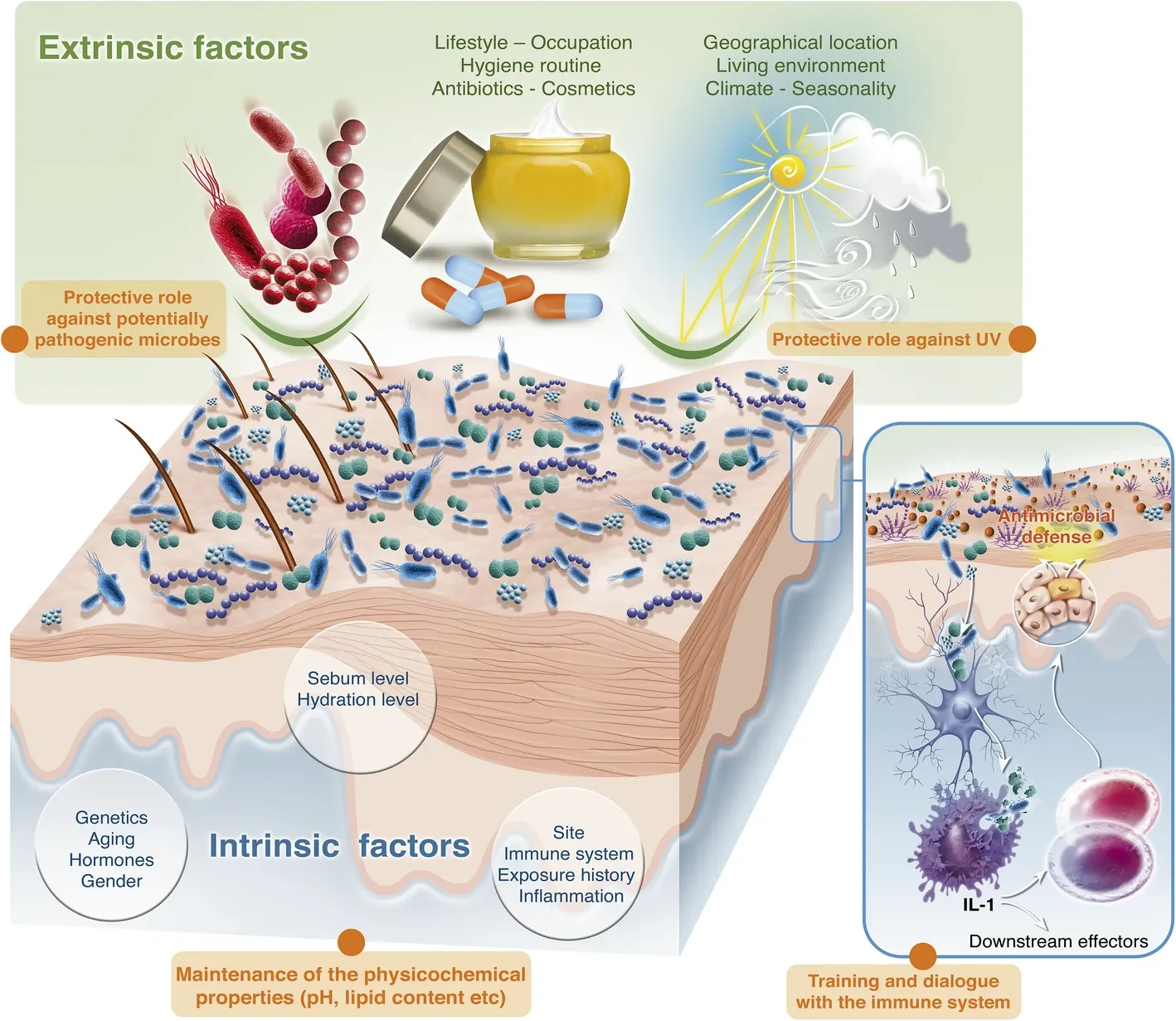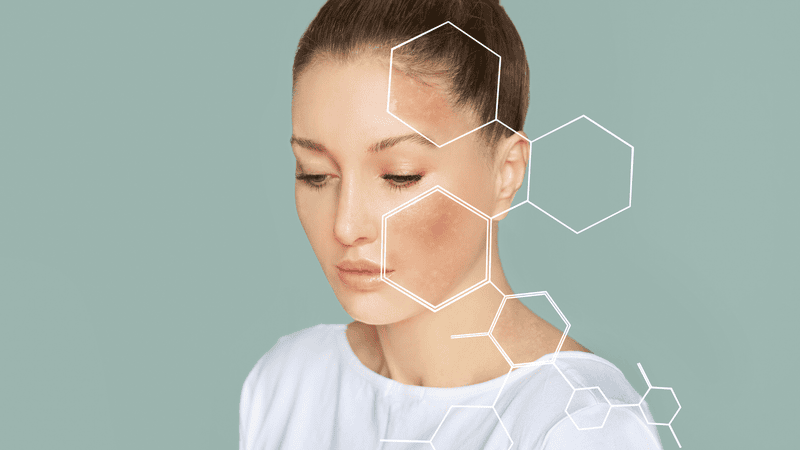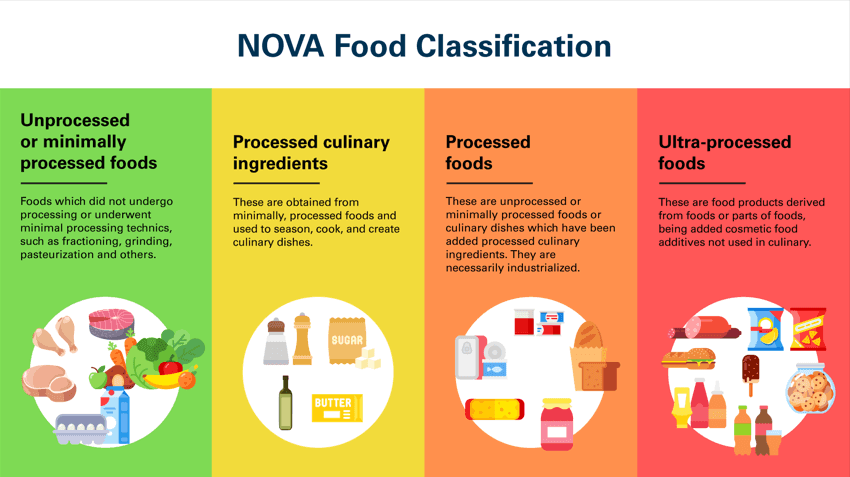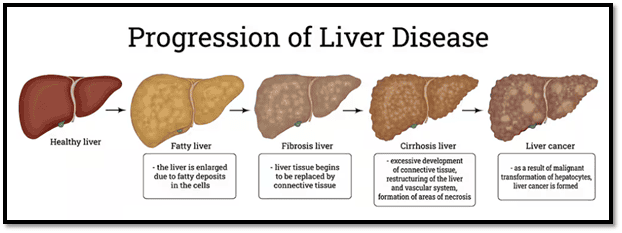The skin, our body’s largest organ and protective barrier, hosts a complex . By understanding the ecosystem called the skin microbiome. This community of bacteria, fungi, viruses, and tiny mites actively supports skin health, strengthens immunity, and contributes to our appearance.
Many people don’t realize that a healthy skin microbiome is not static. It fluctuates in response to seasonal changes, adjusting to variations in temperature, humidity, UV exposure, and environmental factors.
Recent advances in skin microbiome research have revealed how these microbial shifts occur throughout the year and with this knowledge , we can develop personalized seasonal skincare routines that work in harmony with our skin’s natural ecosystem. You can explore your unique skin microbiome to understand how your skin responds to environmental changes.
The Foundations of the Skin Microbiome
Factors influencing skin microbiome
The skin microbiome comprises hundreds of microbial species that live on the skin’s surface, forming a delicate balance essential for skin barrier health.
- Different parts of the body such as the scalp, face, underarms, and hands host distinct microbial communities.
- Diversity is influenced by oil production, moisture, hair density, and daily habits.
- A balanced microbiome helps maintain skin microbiome balance, trains the immune system to tolerate beneficial microbes, and protects against harmful pathogens.
Environmental conditions like temperature, humidity, UV exposure, and pollution affect the microbiome and skin health, sometimes enhancing diversity, other times compromising it.
Two Seasons Where Your Skin Microbiome Experiences Major Changes :
Winter: Microbial Minimalism and Barrier Stress

In winter, cold temperatures, dry air, and indoor heating reduce skin hydration. This weakens the skin barrier and changes the microbial environment.
Cutibacterium (formerly Propionibacterium) thrives in these conditions, sometimes making up over 60% of the microbial population.
While this bacterial dominance can help certain functions, it often triggers acne flare-ups and inflammation.
Beneficial microbes like Staphylococcus and Corynebacterium decline, weakening the skin’s natural defense.
Reduced microbial diversity means the skin microbiome balance is at risk, leaving the skin more vulnerable to pathogens.
Implementing seasonal skincare practices such as hydration-focused moisturizers, gentle cleansing, and microbiome-friendly products can help maintain microbial balance and protect the skin during harsh winter conditions.
Winter skincare tip: Focus on hydration, gentle cleansing, and repairing the skin barrier. Using microbiome-friendly skincare products with probiotic lysates or soothing ingredients can help maintain a healthy skin microbiome.
Summer: Diversity Peaks, Ecology Shifts
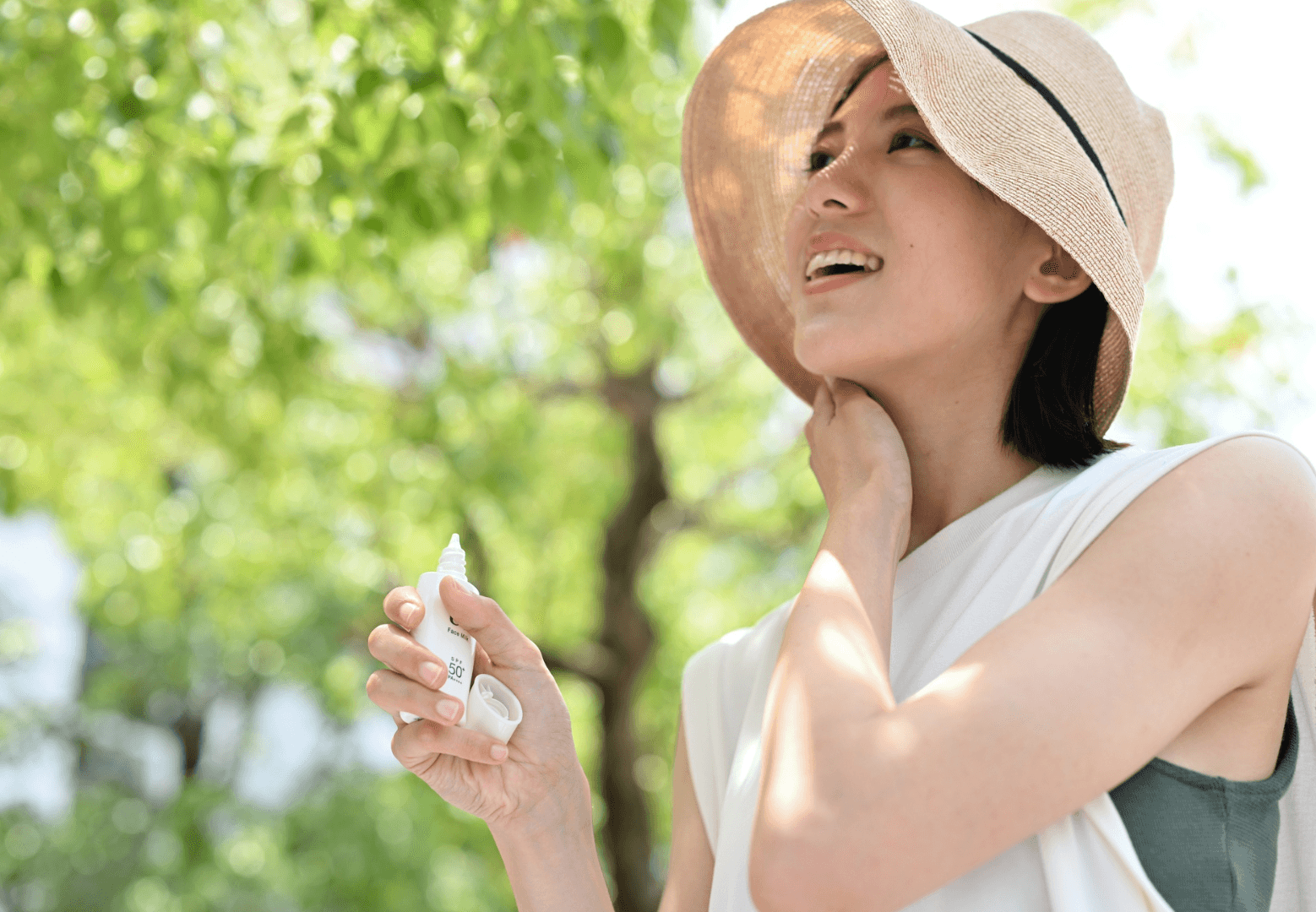
Summer’s heat, humidity, and UV exposure create conditions for the most diverse skin microbiome of the year.
Moisture-loving bacteria such as Staphylococcus, Streptococcus, and Corynebacterium flourish, while Cutibacterium decreases.
These microbes aid in sweat breakdown, pathogen defense, and support the skin barrier.
Bacteria like Sphingomonas increased and produced protective metabolites that offer protection against solar radiations.
Summer skincare tip: Maintain microbiome-friendly skincare by using lightweight moisturizers, gentle cleansers, and sun protection. This helps sustain skin microbiome balance and prevents common summer skin issues like heat rash or eczema flare-ups.
Environmental Drivers and Skin Health Implications
Seasonal shifts in the microbiome are driven by:
Temperature and humidity: Affect sweat, sebum production, and microbial growth.
Prolonged UV exposure and air pollution: Impact barrier integrity, microbial balance and immune responses.
Season | Microbiome Changes | Common Skin Concerns | Skincare Focus |
Winter | Reduced diversity, Cutibacterium rises | Dryness, acne, sensitivity | Barrier repair, hydration |
Spring | Allergy-related shifts; altered microbial balance | Inflammation, flare-ups | Soothing, gentle cleansing |
Summer | High diversity, moisture-loving microbes | Heat rash, eczema, UV sensitivity | Lightweight moisturizers, sun protection |
Autumn | Decline in microbial diversity | Dry patches, uneven tone | Hydration, barrier support |
Supporting the skin barrier with microbiome-friendly skincare products and season-specific routines helps maintain skin microbiome health all year. A comprehensive skin microbiome test can also help track microbial changes across seasons and guide personalized care.
Looking Forward: The Future of Seasonal Microbiome Research
With climate change making seasonal patterns less predictable, understanding how the skin microbiome changes seasonally is increasingly important.
Research is exploring how age, gender, lifestyle, and environment influence these shifts.
Future microbiome skincare products may be personalized, targeting both seasonal changes and individual microbial profiles. Incorporating seasonal skincare practices that adapt to changing environmental conditions can help maintain microbial balance
By paying attention to your skin microbiome and skin barrier health, you can make informed choices that support skin microbiome balance throughout the year, keeping your skin resilient, healthy, and glowing in every season
-Aravind Krishna
Also Read: Skin Microbiome myths- Debunking the common skincare misconceptions
References
Seo, J. Y., You, S. W., Gu, K. N., Kim, H., Shin, J. G., Leem, S., Hwang, B. K., Kim, Y., & Kang, N. G. (2023). Longitudinal study of the interplay between the skin barrier and facial microbiome over 1 year. Frontiers in microbiology, 14, 1298632. https://doi.org/10.3389/fmicb.2023.1298632
Harel, N., Ogen-Shtern, N., Reshef, L., Biran, D., Ron, E. Z., & Gophna, U. (2023). Skin microbiome bacteria enriched following long sun exposure can reduce oxidative damage. Research in microbiology, 174(8), 104138. https://doi.org/10.1016/j.resmic.2023.104138
Mustari, A. P., Agarwal, I., Das, A., & Vinay, K. (2023). Role of Cutaneous Microbiome in Dermatology. Indian journal of dermatology, 68(3), 303–312. https://doi.org/10.4103/ijd.ijd_560_22
Boxberger, M., Cenizo, V., Cassir, N., & La Scola, B. (2021). Challenges in exploring and manipulating the human skin microbiome. Microbiome, 9(1), 125. https://doi.org/10.1186/s40168-021-01062-5
